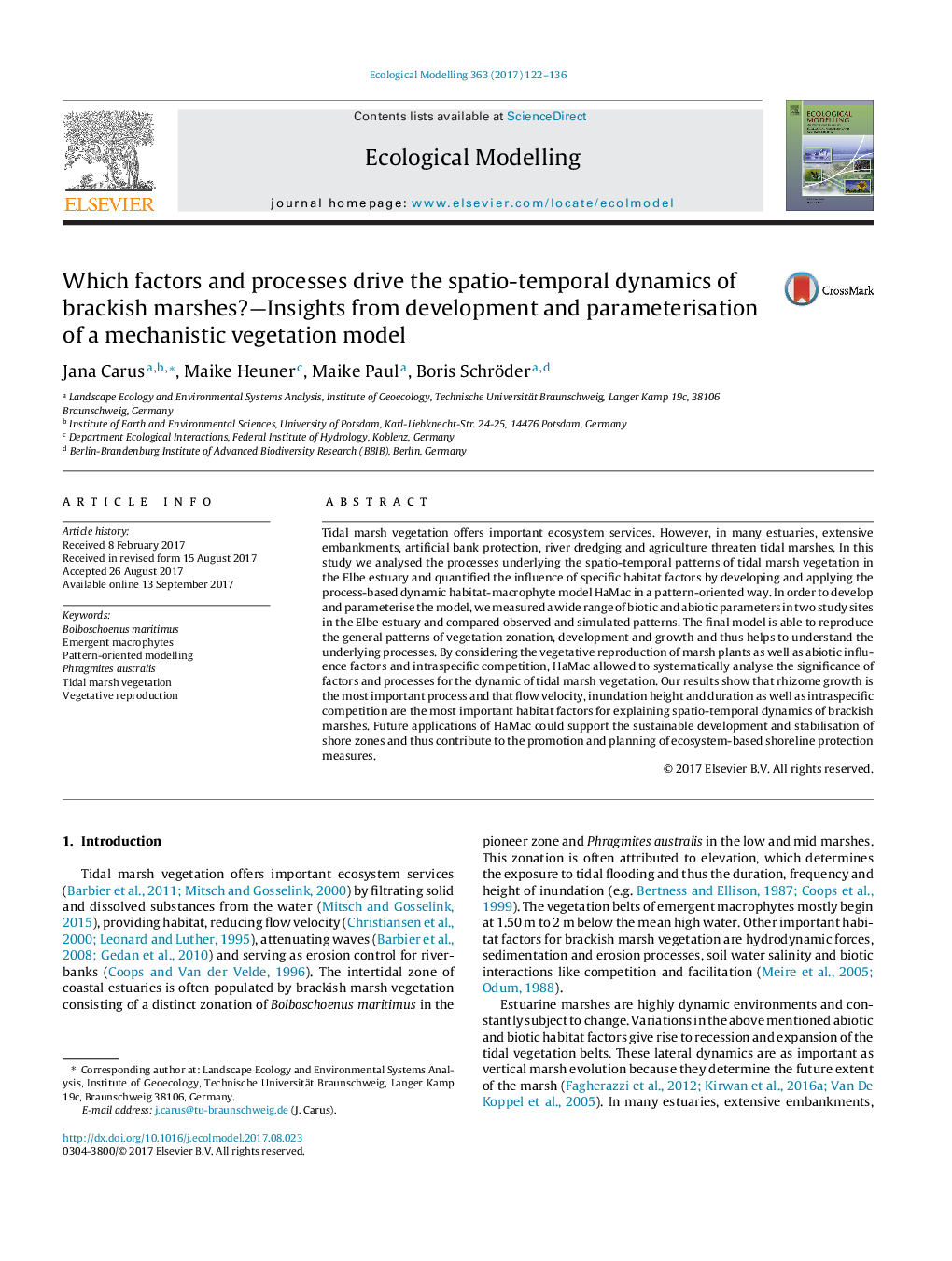| Article ID | Journal | Published Year | Pages | File Type |
|---|---|---|---|---|
| 5742018 | Ecological Modelling | 2017 | 15 Pages |
â¢Pattern-oriented development of the dynamic habitat â macrophyte model (HaMac).â¢Hydrodynamic conditions and intraspecific competition drive marsh-dynamics.â¢Rhizome growth is the key process for the lateral dynamics of brackish marshes.â¢Flow velocity, inundation height and duration affected dispersal of B. maritimus.â¢The dynamics of P. australis were mainly influenced by flow velocity.
Tidal marsh vegetation offers important ecosystem services. However, in many estuaries, extensive embankments, artificial bank protection, river dredging and agriculture threaten tidal marshes. In this study we analysed the processes underlying the spatio-temporal patterns of tidal marsh vegetation in the Elbe estuary and quantified the influence of specific habitat factors by developing and applying the process-based dynamic habitat-macrophyte model HaMac in a pattern-oriented way. In order to develop and parameterise the model, we measured a wide range of biotic and abiotic parameters in two study sites in the Elbe estuary and compared observed and simulated patterns. The final model is able to reproduce the general patterns of vegetation zonation, development and growth and thus helps to understand the underlying processes. By considering the vegetative reproduction of marsh plants as well as abiotic influence factors and intraspecific competition, HaMac allowed to systematically analyse the significance of factors and processes for the dynamic of tidal marsh vegetation. Our results show that rhizome growth is the most important process and that flow velocity, inundation height and duration as well as intraspecific competition are the most important habitat factors for explaining spatio-temporal dynamics of brackish marshes. Future applications of HaMac could support the sustainable development and stabilisation of shore zones and thus contribute to the promotion and planning of ecosystem-based shoreline protection measures.
